How to make a rake?

Those who cultivate even a small piece of land know that when performing garden and earthwork, it is impossible to do without a rake. This tool is a priority in the list of garden tools and performs several basic and auxiliary functions.
Device and purpose
The rake's device is very simple. The design is a handle with a transverse bar with teeth planted on it, which perform the function intended for the rake. Garden rakes are used for a wide variety of jobs. With the help of them you can:
- clean the area from dry foliage;
- rake mowed grass;
- remove plant roots from the ground;
- stir up hay;
- loosen the soil;
- level uneven ground.
Some enterprising gardeners even use the rake for picking berries, such as lingonberries. To do this, use a special tool with long, frequent teeth.


Varieties
In practice, both at home and for industrial purposes, different types of rakes are used. They can be conditionally divided into several types:
- traditional (transverse);
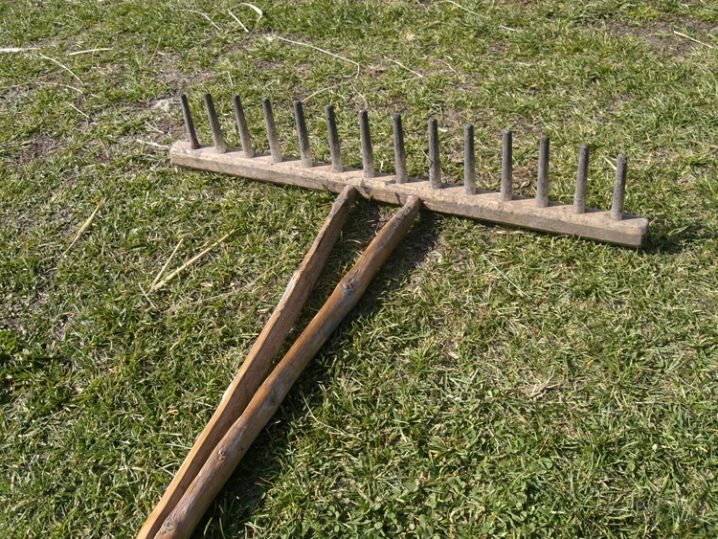
- rake-tedders;
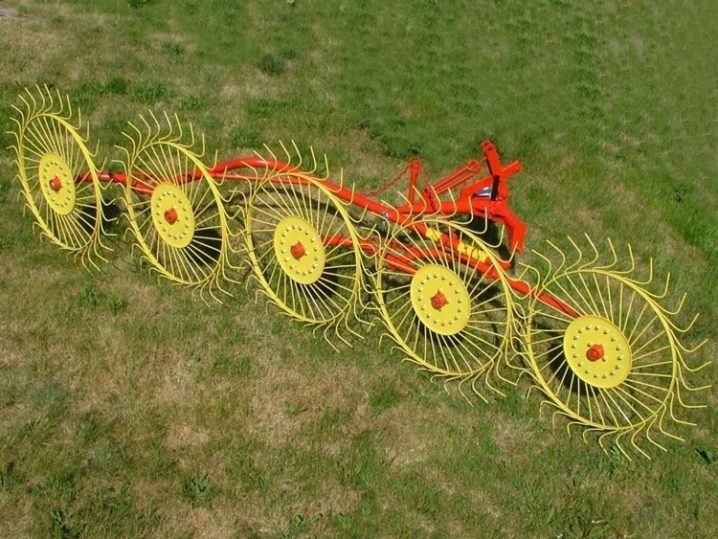
- fan-shaped;

- equestrian;
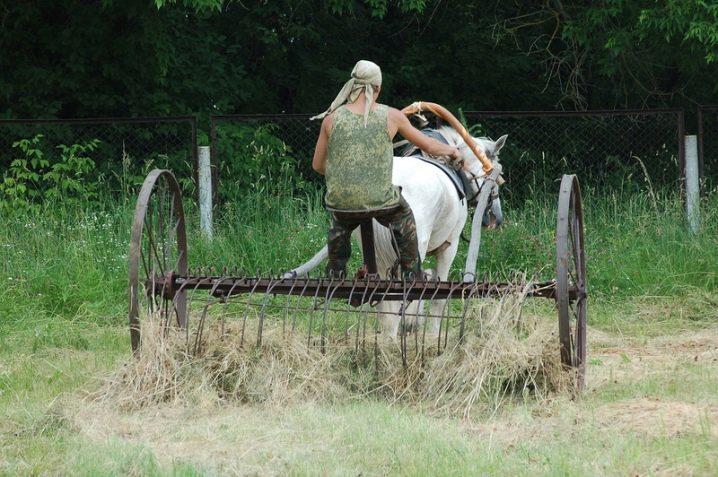
- rotary;
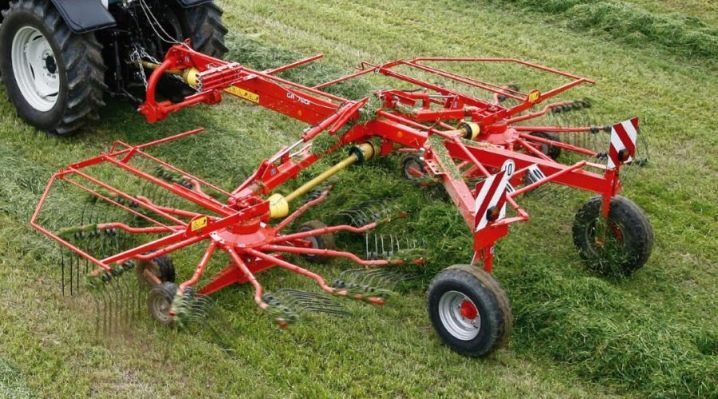
- for berries.
The rake for berries is arranged in a special way. They are best suited for picking lingonberries. The product is a cross between a rake and a scoop. The teeth in them are thin and set close to each other. Such a device makes it possible to harvest berries from the bushes with convenience and practically without loss.
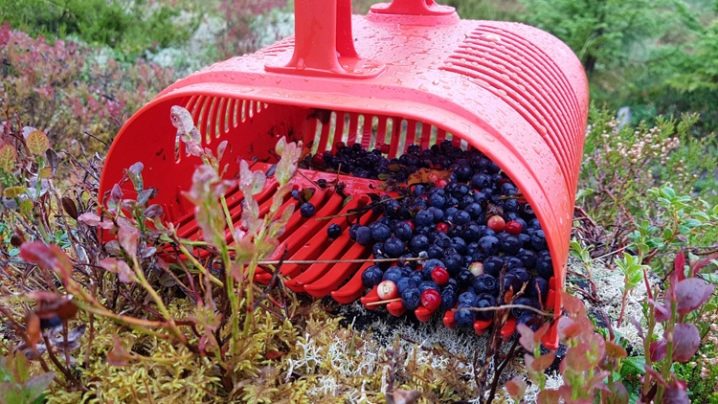
Manufacturing materials
There are a wide variety of garden tools available in retail nowadays, including the rake. They are relatively inexpensive, but those who want to save money can make this device on their own. The manufacturing process is simple and almost every summer resident or amateur gardener can handle it.
The following materials are used for the manufacture of the product:
- iron, which is subsequently painted with anti-corrosion agents;
- steel;
- aluminum;
- plastic;
- plastic;
- wood.


The strongest and most durable rake will be made of steel. However, they have one drawback - they are heavy.
So that the heavy weight of the product does not interfere with work, it is better to choose the aluminum option. Perhaps such a rake will last a little less, but your hands will not get tired of them either. Products made of plastic or plastic are considered comfortable and lightweight, but they will not last long. An alternative to them will be wooden products.


DIY rake
Those who decide to make a rake on their own will immediately understand that this tool consists of only two parts: a handle and a transverse bar planted on it.
Stalk
The shank is made mainly of wood. For this, they most often use:
- pine, which is not afraid of moisture, besides, it is quite strong and lightweight;
- birch, easy to process and lightweight;
- beech, famous for its good strength, but requiring additional processing;
- oak, which, although strong, but due to its heavy weight, can only be used by strong men.
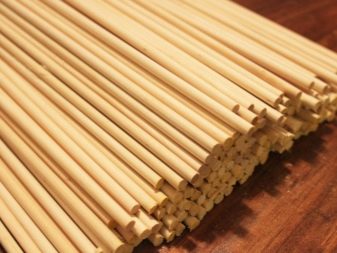
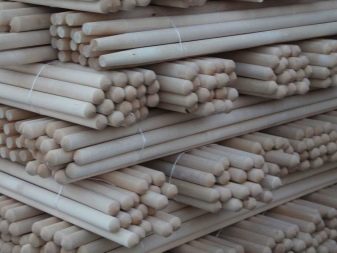
At the factory, if the necessary equipment is available, an even round bar 3-4 cm thick is cut out of these types of wood and cleaned well.When making a rake at home, you can use the trunk of a young tree of the above varieties by cutting out a stalk of the required length from it.
The finished section of the shoot is sharpened on one side and the other cut is sanded. Do not paint or peel the handle, as it will slide and rotate in your hands during use.
Cross working surface
At home, it is easiest to make a rake work surface out of wood from the material at hand. For this, the same types of wood are suitable that were considered when making the holder. For a better result, it is best to pre-make a drawing of the intended model. This will make it easier for you to navigate the execution process.

The process of making a bar with teeth consists of several successive steps.
- From a bar 5 cm wide, you need to make a block with a height of 3 cm and a length of 50-60 cm.
- In its center, on the side of the width of the plank, make a hole, the diameter of which will coincide with the diameter of your cutting.
- Using a thick drill, make holes along the width of the shoe in the work surface blank. The distance between them should be 35-40 mm.
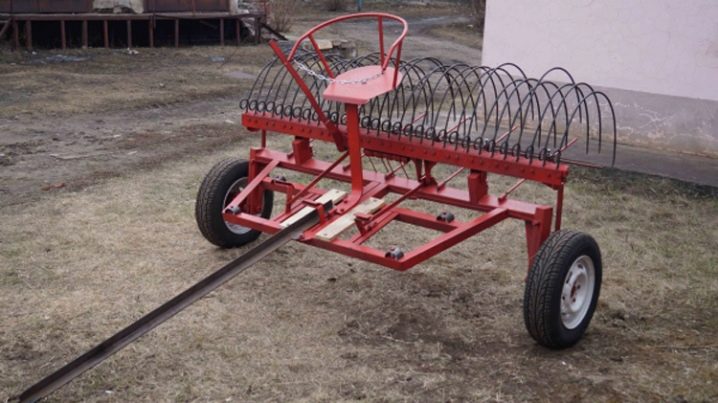
- From a suitable material, make blanks for teeth 10-11 cm long and a diameter equal to the width of the prepared teeth.
- For ease of use, each prong must be sharpened on one side.
- Insert the prongs into the holes prepared for them with the blunt end inside the bar and fix with self-tapping screws from the side of the shoe height.
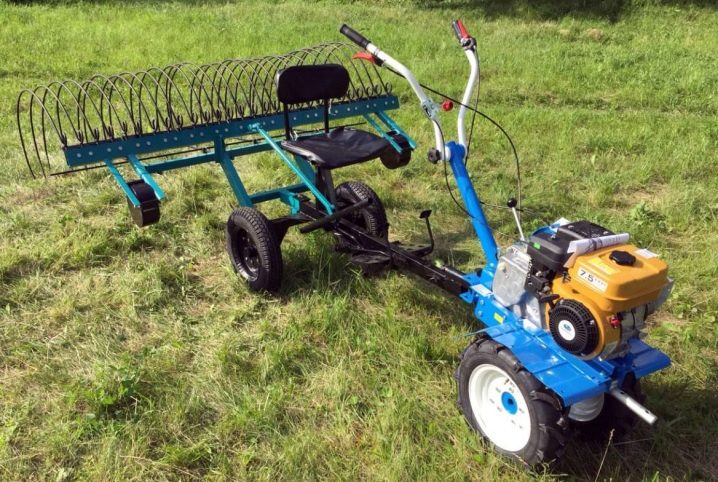
Insert the prepared handle into the hole for the holder and also fix it with a self-tapping screw. The finished work surface must be painted or treated with another wood material to prevent moisture penetration into the wood.
Homemade cross rake is ready. They are suitable for collecting foliage, hay, lawn cleaning. With light use and proper care, the instrument will last a long time.
Homemade rake-tedders
Currently, many farmers who have to cultivate large areas of land use walk-behind tractors. This unit is considered universal, since it can be used to automate the transportation of cargo, and harvesting, and loosening of the soil. It is possible to connect to such mini-tractors and tedder rakes. Making them at home will not be difficult. It will be enough just to build only three metal wheels.
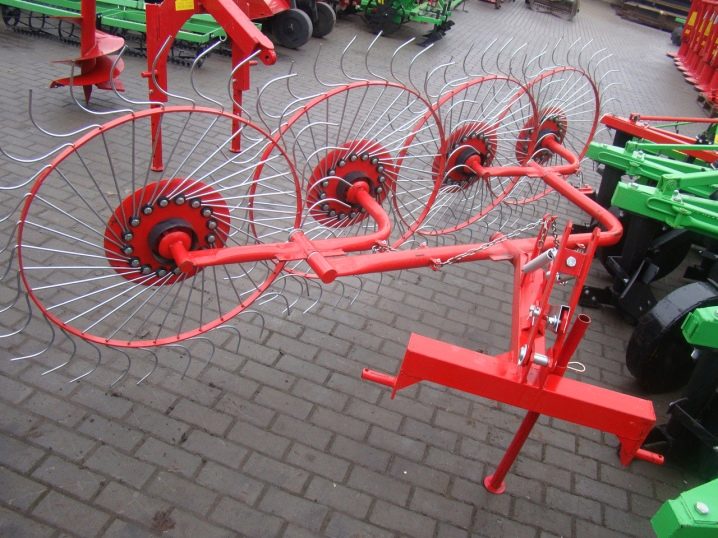
In order to make a tedder rake for a walk-behind tractor, you need to prepare:
- metal rail for the frame;
- brackets on which the wheels will be attached;
- strong steel wire for making raking springs;
- a pair of bearings that need to be attached to the hubs to mount the wheels;
- steel sheets with a thickness of 4 mm, from which the impellers will be made.
You will also need parts for the hitch, with the help of which the product will later be attached to the walk-behind tractor. When manufacturing the unit, do not forget about safety precautions. In the event of an incorrectly performed work, not only the mini-tractor may suffer, but also the person.
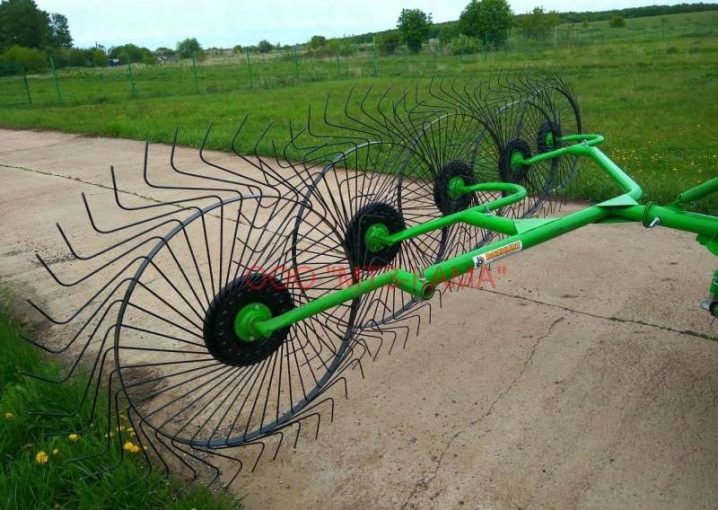
The rake is an important, irreplaceable element of garden tools. With their help, you can do a lot of work. What kind of rake to choose for work in the garden is up to you, but you should know that the tool is selected based on the types and scope of functions that they will perform.
For information on how to make a garden fan rake, see the video below.































































The comment was sent successfully.